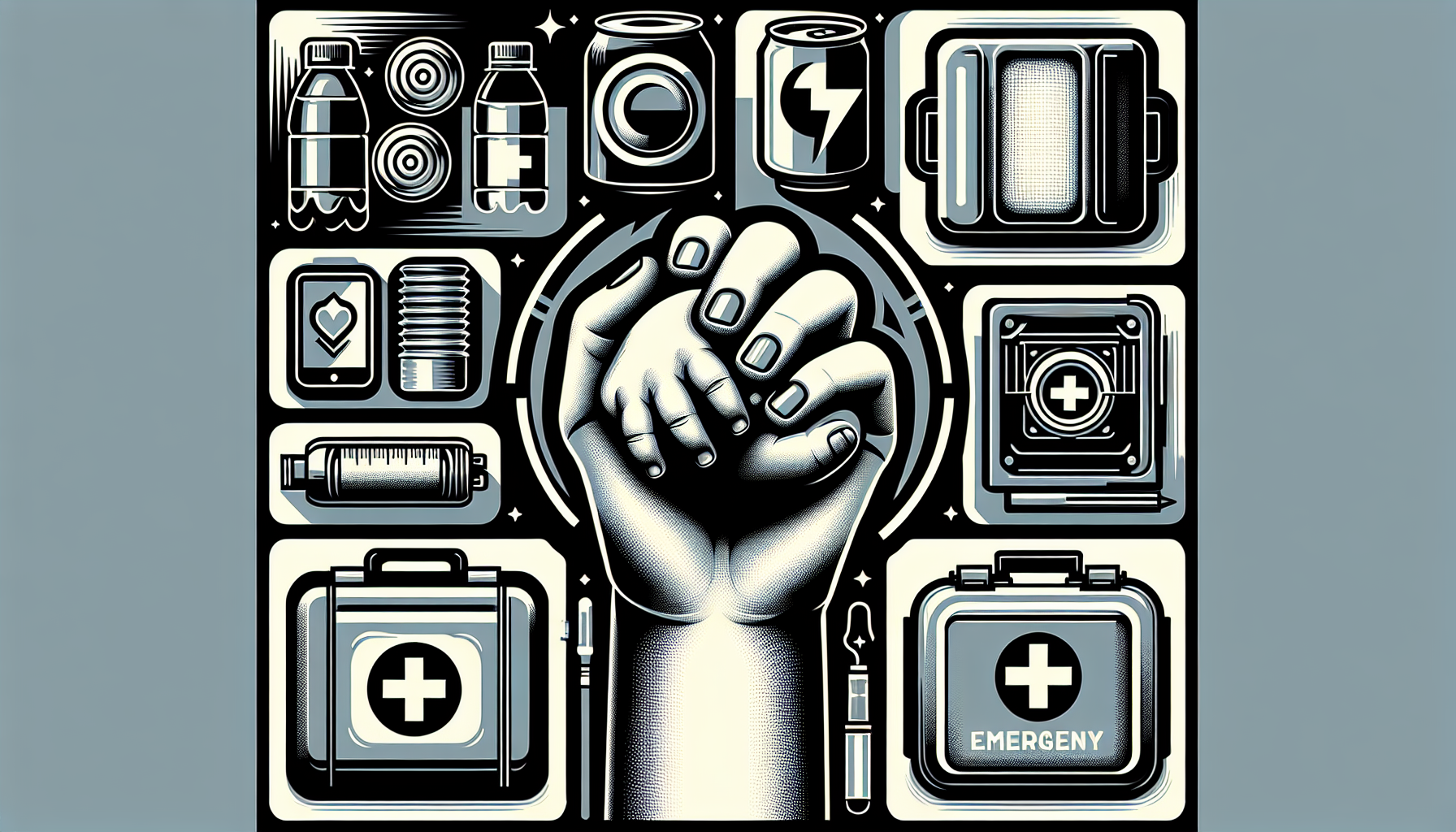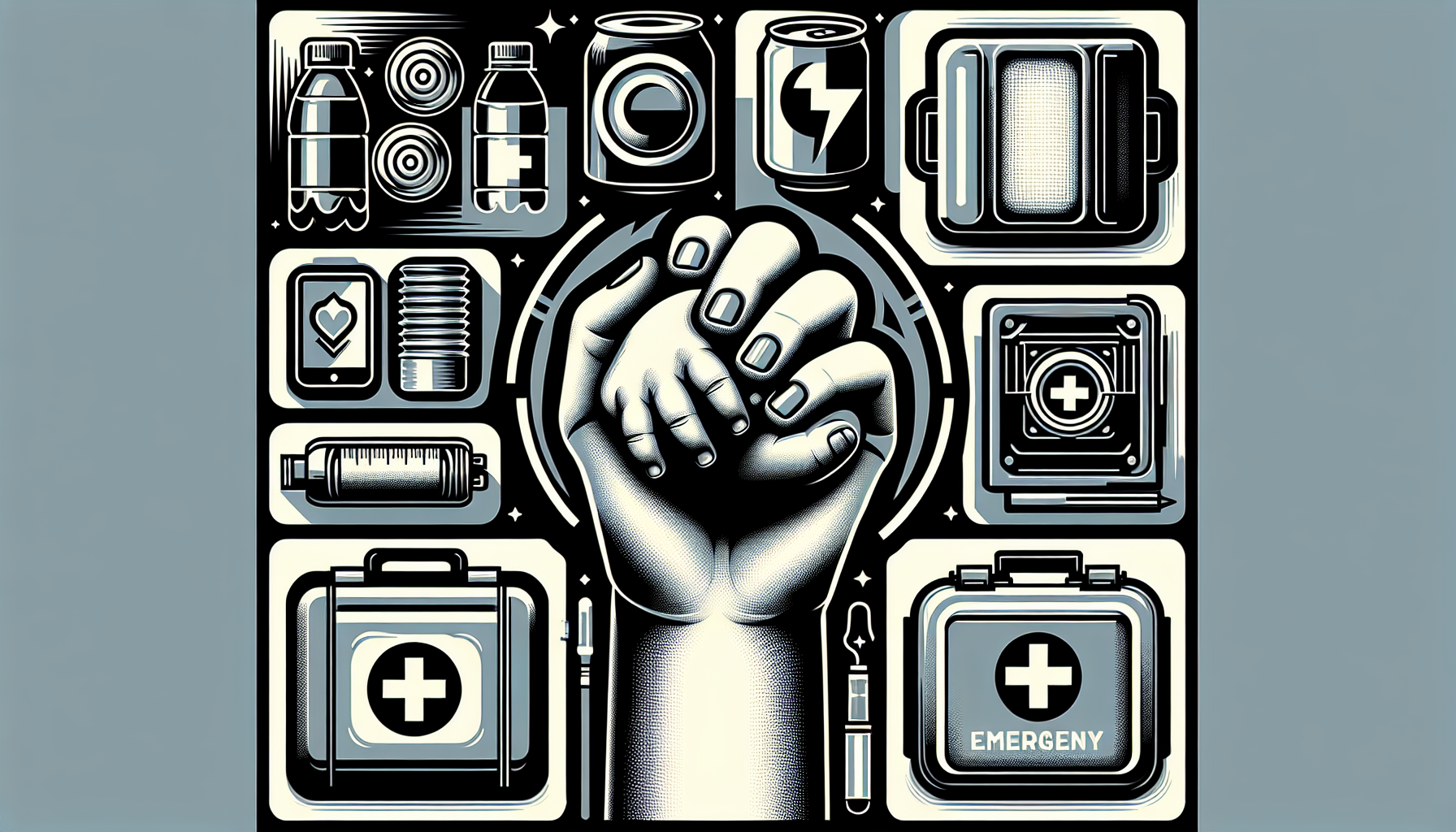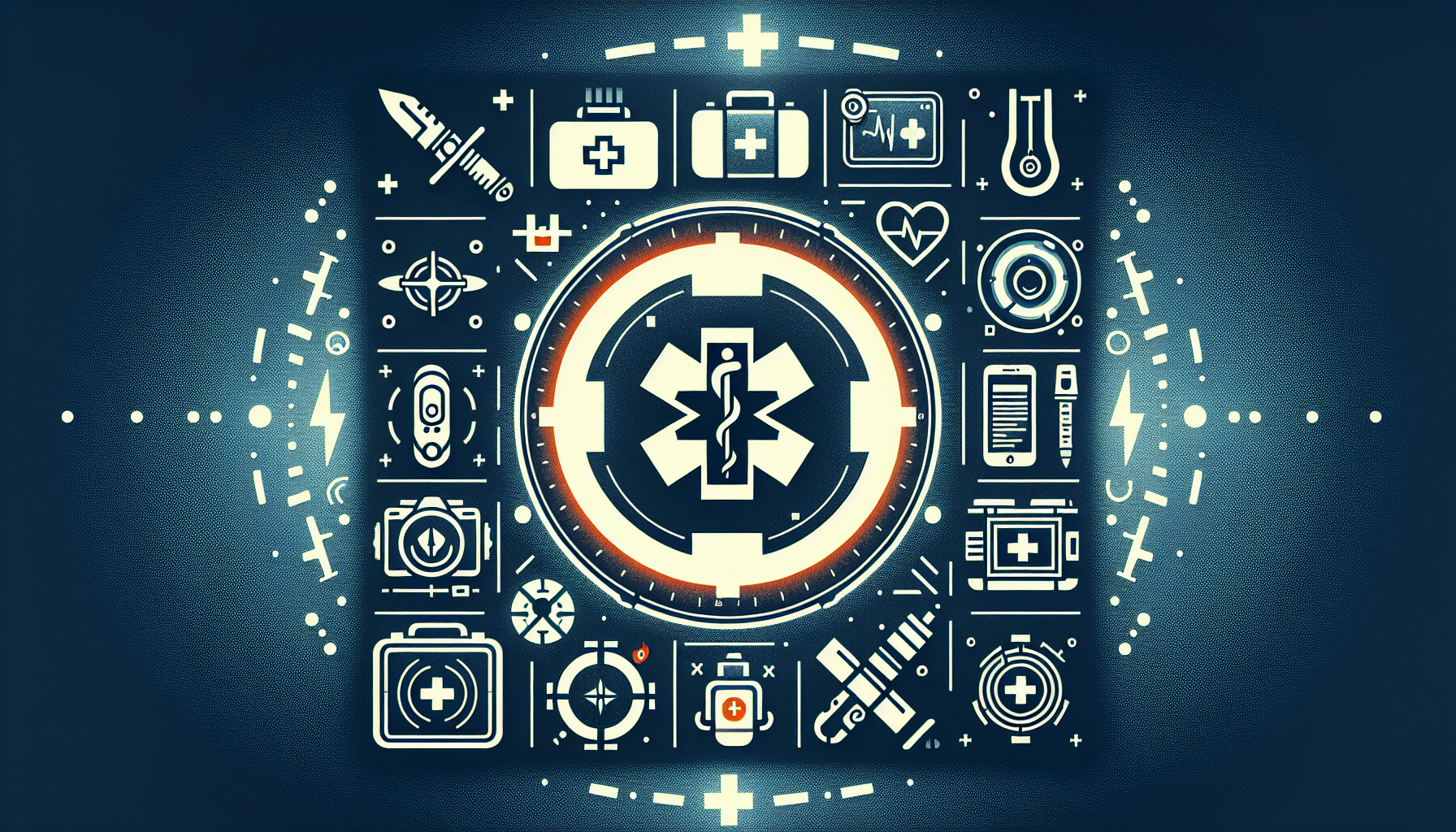Best Ways To Prepare Your Family For An Emergency Situation
Best Ways To Prepare Your Family For An Emergency Situation
In this article, you will discover the most effective methods to ensure your family is well-prepared for any emergency situation that may arise. From creating a comprehensive emergency plan to stocking essential supplies, these tips will empower you to face unexpected events with confidence and keep your loved ones safe. With an emphasis on practicality and thoroughness, this guide will equip you with the knowledge and tools needed to navigate through challenging times calmly and efficiently, putting your family’s well-being at the forefront.

Prepare Your Family For An Emergency Situation by Creating an Emergency Plan
Identify potential risks
When it comes to preparing your family for an emergency situation, the first step is to identify potential risks in your area. These risks can vary depending on where you live, so take some time to research and understand the specific threats that may affect you. Are you at risk of earthquakes, hurricanes, floods, tornadoes, or wildfires? By identifying these risks, you can better prepare for them and develop an emergency plan tailored to your needs.
Define roles and responsibilities
Once you have identified potential risks, it’s important to define roles and responsibilities for each family member. Assign specific tasks to everyone, taking into consideration their age, physical capabilities, and skills. This way, everyone knows what they need to do during an emergency, and it helps prevent confusion and panic. Designate someone in charge of calling emergency services, someone responsible for gathering important documents, and someone to take care of pets, if applicable. Clearly defining roles and responsibilities ensures that everyone knows what is expected of them and can act quickly and efficiently during an emergency.
Establish communication methods
Communication is crucial during an emergency situation, so it’s important to establish reliable communication methods. Ensure that everyone in your family has a fully charged cellphone and develop a plan for how you will stay in touch if the power goes out or conventional communication methods are disrupted. Pick a central meeting point where you can reunite if you get separated, such as a neighbor’s house or a designated landmark. It’s also a good idea to establish an out-of-state contact who can serve as a communication hub for your family members. In stressful situations, having a clear plan for communication can help ease anxiety and ensure the safety of your loved ones.
Plan for evacuation
In some emergency situations, evacuation may be necessary. It’s essential to plan for this scenario in advance to ensure a smooth and safe evacuation process. Identify the evacuation routes in your area and familiarize yourself with them. Create a checklist of essential items you need to grab before leaving, such as important documents, medications, and your emergency supply kit (more on this later). Make sure you have a plan for transportation, whether it’s your own vehicle, public transportation, or coordinating with neighbors. Additionally, if you have pets, research pet-friendly evacuation shelters or identify a trusted friend or family member who can take care of them during an evacuation.
Practice the plan
Once you have created your emergency plan, it’s crucial to practice it regularly. Conduct mock drills with your family, simulating different emergency scenarios, and ensure that everyone understands their roles and responsibilities. This practice will help you fine-tune your plan and identify any areas that may need improvement. Practice evacuating your home, gathering essential items, and meeting at your designated location. Review and update your emergency plan periodically as circumstances may change. By practicing your plan, you will gain the confidence and readiness needed to handle any emergency situation that may arise.
Assembling an Emergency Supply Kit
Water and food supplies
In an emergency situation, access to clean drinking water and non-perishable food is crucial. Build an emergency supply kit with enough water to last at least three days. Plan for one gallon of water per person per day for drinking and sanitation. Stock up on canned foods, granola bars, nuts, and other non-perishable food items that have a long shelf life. Don’t forget to include a manual can opener in your kit. Keep in mind any dietary restrictions or special needs of family members when selecting food items.
First aid kit
A well-equipped first aid kit is essential for addressing minor injuries and providing initial care during an emergency. Stock your kit with adhesive bandages, sterile gauze, antiseptic wipes, medical tape, tweezers, scissors, and over-the-counter medications for common ailments. Consider including any prescription medications that family members may need. Familiarize yourself with the contents of the kit and learn basic first aid techniques to ensure you can provide appropriate care when needed.
Flashlights and extra batteries
During power outages or emergencies that occur at night, having reliable lighting is crucial. Include flashlights in your emergency supply kit and ensure that you have extra batteries on hand. LED flashlights are a good choice as they are energy-efficient and have a longer battery life. Distribute flashlights throughout your home, so they are easily accessible when needed. Don’t rely solely on candles, as they can pose a fire hazard.
Emergency cash
During an emergency situation, it’s possible that ATMs and credit card machines may not be accessible. It’s important to have some emergency cash on hand to cover immediate expenses. Keep small denominations and a mix of bills in your emergency supply kit. Aim to have enough cash to cover basic necessities, transportation, and any unforeseen expenses that may arise.
Essential medications
If you or a family member rely on prescription medications, it’s crucial to have a supply of those medications in your emergency kit. Create a list of all necessary medications and ensure you have at least a week’s worth of supplies. Rotate medications regularly to ensure they don’t expire while in storage. If refrigeration is required for certain medications, have a plan for keeping them cool during a power outage.
Important documents
In an emergency, having your important documents readily accessible can save valuable time and stress. Gather and secure copies of vital documents such as birth certificates, passports, insurance policies, medical records, and property deeds. Store them in a waterproof and fireproof container within your emergency kit. Additionally, consider making digital copies and storing them securely online or on a portable flash drive. Having these documents readily available will help with insurance claims, identity verification, and accessing medical care if needed.
Securing Your Home
Evaluate structural integrity
Ensuring that your home is structurally sound is essential for minimizing damage during emergencies. Have a professional assess your home for any structural vulnerabilities, such as weak foundations, damaged roofs, or unsecured walls. Address any issues promptly to minimize the risk of collapse or further damage during natural disasters like earthquakes, hurricanes, or tornadoes. By investing in home improvements and repairs, you can significantly increase your family’s safety.
Install smoke and carbon monoxide detectors
Smoke and carbon monoxide detectors are vital safety devices that can save lives in the event of fires or gas leaks. Install them in every bedroom, outside sleeping areas, and on each level of your home. Test the detectors regularly and replace batteries as needed. Remember, even small amounts of carbon monoxide can be lethal, so don’t neglect this important safety measure.
Secure windows and doors
Properly securing windows and doors is crucial for preventing unauthorized entry and minimizing damage during storms or break-ins. Install storm shutters or reinforce windows with impact-resistant film to protect against high winds and flying debris. Ensure that all doors have sturdy locks and consider installing deadbolts. Reinforce entry points, such as door frames and hinges, to make them more resistant to forced entry. By fortifying your home, you can increase your family’s safety and deter potential criminals.
Create a safe room
In certain emergency situations, having a designated safe room can provide added protection for your family. Choose a room in your home that is structurally strong and has the fewest windows. Reinforce the walls with plywood or install steel panels. Have a sturdy door with secure locks. Stock the safe room with your emergency supply kit, communication devices, and any necessary tools for protection. Familiarize your family members with the location of the safe room and how to access it quickly if needed.
Emergency Communication
Establish a communication plan with family and friends
During an emergency, it’s crucial to be able to communicate with your family and friends to ensure their safety and provide updates. Establish a communication plan that includes multiple methods such as phone calls, text messages, and instant messaging apps like WhatsApp or Signal. Define a central point of contact that everyone can reach and keep a list of emergency contact numbers for all family members and close friends. Ensure that everyone knows the plan and understands the importance of staying in touch.
Choose an out-of-state contact
In the event of a widespread emergency that affects local phone lines and cell towers, it may be easier to reach an out-of-state contact. Choose a trusted family member or friend who lives in a different region to serve as a central point of communication. Make sure that everyone in your family has this contact’s number and knows to call them if local communication is disrupted. This out-of-state contact can help relay messages and updates between family members, providing a valuable lifeline during stressful situations.
Use social media and emergency apps
Social media platforms and dedicated emergency apps can be invaluable tools for information dissemination and staying updated during an emergency. Follow local authorities, emergency management agencies, and trustworthy news sources on social media platforms like Twitter or Facebook. Many emergency apps provide real-time updates, emergency alerts, and resources specific to your location. Make sure to download and familiarize yourself with popular emergency apps in your area that are recommended by local authorities.
Keep phones charged and have backup power sources
During an emergency, it’s critical to have functioning communication devices. Keep your phones charged and have backup power sources like power banks or car chargers available. Invest in a portable battery-powered or hand-cranked radio to stay informed even if power goes out. Consider investing in a solar-powered phone charger or a generator to ensure that you can continue to communicate and access important information during prolonged power outages.

Preparing for Natural Disasters
Earthquakes
If you live in an earthquake-prone area, it’s essential to take specific preparations to safeguard your family. Secure heavy furniture or appliances to prevent them from toppling over. Anchor tall bookshelves and cabinets to the wall. Have a designated safe spot in each room away from windows, heavy furniture, and potential falling objects. Teach your family members the “Drop, Cover, and Hold On” technique to protect themselves during an earthquake. Finally, learn the location of your nearest earthquake shelter and evacuation routes.
Hurricanes
Hurricanes can bring strong winds, heavy rainfall, and storm surges, posing a significant threat to coastal areas. Prepare for hurricanes by securing outdoor items like patio furniture or garbage bins. Trim trees and remove weak branches that could potentially fall. Install storm shutters or have plywood and nails ready to protect windows. Have a plan for evacuation, and establish a safe meeting point if you need to evacuate. Stay updated with local weather reports and follow any evacuation orders issued by authorities.
Floods
Flooding can occur due to heavy rains, river overflow, or storm surge. If you live in a flood-prone area, elevate electrical systems and appliances in your home. Install check valves on plumbing to prevent sewage backups. Store important documents and valuables in waterproof containers or in a secure off-site location. Familiarize yourself with evacuation routes and have a plan for relocating to higher ground if necessary. Stay tuned to local weather updates and heed any warnings or evacuation orders.
Tornadoes
Tornadoes can strike with little warning, so being prepared is crucial. Identify a safe location in your home, preferably a basement or storm cellar. If those are not available, choose an interior room on the lowest level of your home without windows, such as a bathroom or closet. Reinforce the safe location by adding extra layers of protection like heavy blankets or mattresses. Have a portable weather radio or reliable smartphone app to receive tornado warnings and stay updated on local conditions.
Wildfires
Living near or in forested areas puts you at risk of wildfires. To prepare for this threat, create a defensible space around your home by removing dead vegetation and maintaining a clear buffer zone. Regularly clean gutters and roofs of debris that could be fuel for fires. Keep a supply of fire-safe materials like fire extinguishers, hoses, and shovels in an easily accessible location. Have an evacuation plan in place and be ready to leave if authorities advise or require evacuation. Stay informed about local fire conditions and follow any evacuation orders or instructions from firefighting agencies.
Handling Medical Emergencies
CPR and first aid training
Being trained in CPR (Cardiopulmonary Resuscitation) and first aid can be lifesaving in medical emergencies. Enroll yourself and family members in certified training courses. Learn how to perform CPR, how to manage bleeding, administer basic first aid, and recognize signs of common medical emergencies. Regularly review and practice these skills to ensure confidence and readiness. With the ability to provide immediate care, you can potentially save lives before professional help arrives.
Creating a medical emergency kit
In addition to a general first aid kit, it’s beneficial to assemble a medical emergency kit tailored to your family’s specific needs. Include any necessary prescription medications, EpiPens for severe allergies, inhalers for asthmatics, and other specialized medications. Consider including basic medical supplies like gloves, adhesive strips, tweezers, and thermometers. Having a well-stocked medical emergency kit allows you to address medical needs promptly and efficiently during an emergency.
Know the location of emergency medical facilities
Familiarize yourself with the locations and contact information of nearby emergency medical facilities, hospitals, and urgent care centers. In a medical emergency, time is of the essence, and knowing where to go for specialized care can be critical. Keep a list of emergency contact numbers for local medical facilities readily available. If a family member has a chronic medical condition, ensure they have a medical alert bracelet or necklace with important information about their condition and any necessary medications.
Ensuring Financial Preparedness
Maintaining an emergency fund
Financial preparedness is just as crucial as physical preparedness when it comes to emergencies. Establish and maintain an emergency fund to cover unexpected expenses that may arise. Aim to save at least three to six months’ worth of living expenses. This fund will provide a safety net during times of crisis, allowing you to handle unexpected costs without adding further stress to the situation. Regularly review and replenish your emergency fund to ensure its adequacy.
Reviewing insurance coverage
Review your insurance policies to ensure that they adequately cover potential risks in your area. Homeowner’s or renter’s insurance, flood insurance, and earthquake insurance (if applicable) should be reviewed and updated regularly. Understand the coverage limits, deductibles, and exclusions of each policy. Take inventory of your belongings and keep a detailed record of high-value items. Consider adding additional coverage or riders if necessary. By staying informed and having appropriate insurance coverage, you can mitigate financial losses during emergencies.
Keeping important financial documents secure
During an emergency, having access to your financial documents is essential. Keep copies of important financial documents such as insurance policies, bank account information, wills, and deeds in a secure location. Consider storing them digitally on a password-protected, encrypted hard drive or cloud storage service. Ensure that someone you trust, such as a family member or attorney, knows about the location of these documents. In the event that your physical copies are lost or destroyed, having digital copies will help with insurance claims, obtaining emergency funds, and recovering financially.
Preparing for Extended Power Outages
Stock up on non-perishable food
Extended power outages can occur during emergencies like severe storms or natural disasters. To prepare for these situations, stock up on non-perishable food items that require no refrigeration or cooking. Canned goods, dried fruits, nuts, crackers, and granola bars are good choices. Don’t forget to also include a manual can opener in your emergency supply kit.
Use alternative cooking methods
When the power goes out, cooking meals can become a challenge. Prepare for this by having alternative cooking methods available. A camping stove with sufficient fuel, portable butane burners, or even a grill can serve as alternatives for cooking. Ensure that these cooking methods are used safely and are operated in well-ventilated areas to prevent carbon monoxide poisoning.
Have a backup power generator
Investing in a backup power generator can help you maintain essential electrical functions during prolonged power outages. A generator can power important appliances like refrigerators, freezers, and medical equipment. Ensure that the generator is properly installed and that you have enough fuel on hand to operate it for an extended period. It’s important to regularly test and maintain your generator to ensure it is in good working condition when needed.
Protect sensitive electrical devices
Power surges or fluctuations during and after an emergency can damage sensitive electrical devices like computers, smartphones, and medical equipment. Use surge protectors for electronic devices to help safeguard them from sudden spikes in voltage. Consider investing in uninterruptible power supply (UPS) devices for critical electronics. These devices provide temporary power during an outage and protect against power surges.
Animal and Pet Preparedness
Create a pet emergency kit
If you have pets, it’s important to include them in your emergency preparations. Have a pet emergency kit stocked with essential supplies specifically tailored for their needs. Include enough pet food and water to last several days, along with any necessary medications and their vaccination records. Pack comfort items such as familiar blankets, toys, and pet carriers. Don’t forget to include waste disposal supplies like poop bags and litter for cats. Consider the needs of each pet, and adapt the emergency kit accordingly.
Identify pet-friendly shelters
In the event of an evacuation, not all shelters or hotels may accept pets. Research and identify pet-friendly shelters or boarding facilities in your area in advance. Keep a list of their contact information, requirements, and available spaces. Establish a plan for relocating your pets to these facilities quickly and safely. If staying with family or friends during an evacuation, ensure that they are willing and able to accommodate your pets as well.
Ensure proper identification and vaccinations for pets
In case your pet becomes separated from you during an emergency, proper identification is crucial for their safe return. Ensure that your pets have up-to-date identification tags with your contact information. Consider microchipping your pets as a further safeguard. Regularly update their vaccinations and keep copies of their veterinary records in your emergency kit. If your pets require any medications, ensure you have a sufficient supply on hand.
Personal Safety and Self-Defense
Take self-defense classes
Empowering yourself with self-defense skills can provide a sense of control and confidence in emergency situations. Enroll in self-defense classes that teach techniques to protect yourself and your loved ones. Learn basic self-defense moves, how to assess potential risks, and strategies for personal safety. Regular practice and training will help improve your physical abilities and mental preparedness.
Know your surroundings
Familiarize yourself with your surroundings, both in your immediate neighborhood and in any areas you frequently visit. Identify potential safety hazards, such as poorly lit areas or secluded spots. Be aware of your surroundings at all times and trust your instincts when it comes to assessing potential risks. Knowing the layout of your neighborhood, including alternative routes and potential evacuation points, can be invaluable during emergencies.
Carry personal safety items
Having personal safety items readily available can provide an extra layer of protection in emergency situations. Carry items like pepper spray, a personal alarm, or a whistle to deter potential attackers or draw attention to yourself in distressing situations. Consider carrying a basic self-defense tool, such as a tactical flashlight or a self-defense keychain, if legally permissible in your area. Remember to familiarize yourself with the laws and regulations governing the use of such items.
Have a family meeting spot
Establish a designated family meeting spot in your neighborhood or community where you can reunite if you get separated during an emergency. It could be a neighbor’s house, a specific landmark, or a community center. Ensure that every family member knows the location and can navigate their way there independently. Having a pre-determined meeting spot eliminates confusion and helps facilitate a quick reunion.
By following these comprehensive steps to prepare your family for an emergency situation, you can minimize risks, ensure the safety of your loved ones, and enhance your ability to effectively handle any unexpected events. Remember, preparation is key, and your proactive efforts today can make all the difference in tomorrow’s emergencies. Stay safe!




